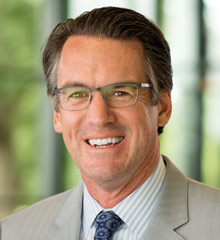Theological Themes in 1 Thessalonians
Revised by Matthew L. Skinner (4/23)
Hope
The authors frequently mention hope and its basis (1:3; 2:19; 4:13; 5:8). This idea of hope is closely and specifically connected to the expectation of Jesus’ coming and to the promise of believers’ own resurrection from the dead.
Imitation
The first two chapters of the letter speak of imitating the behavior and example of other Christians. Imitation is a common theme in Paul’s writings.
Jesus’ second coming
Four times (2:19; 3:13; 4:15; 5:23) the authors make reference to Jesus’ coming (parousiaThe parousia refers to the second coming of Christ in glory and triumph. This apocalyptic event fulfills various end-of-time prophecies such as the resurrection of the dead and the establishment of the kingdom of God on earth. More in Greek). This future event gives a foundation for Christian hope and calls believers to be alert and to live a life consistent with God’s holiness.
Familial imagery
The letter employs a number of familial terms and metaphors to describe the relationship between the Thessalonians and the letter’s authors (2:1, 7-12, 17). While this was not an unusual way to use such language in that ancient context, it nevertheless supports the letter’s intimate tone and the idea that the church exists as a distinctive, alternate society.
Holiness (SanctificationSanctification means to be set aside for a special purpose. The coming of the Holy Spirit sanctified the disciples and the people of God and made it possible for believers to grow in grace through the covenant of their baptism. More)
The English words “holiness” and “sanctification” both translate the Greek word hagiosmos and its cognates, which appear in this letter (3:13; 4:3, 7). Holiness has less to do with moral purity and more to do with God’s identity as One “set apart” from ordinary or common things. PaulThe Apostle Paul, originally known as Saul of Tarsus, was the author of several New Testament letters and the founder of many Christian communities. More understands the church as a collection of people manifesting divine holiness while they navigate everyday living situated in this world. Likewise, the church consists of saints (holyHoly is a term that originally meant set apart for the worship or service of God. While the term may refer to people, objects, time, or places, holiness in Judaism and Christianity primarily denotes the realm of the divine More ones) who receive God’s Holy Spirit (3:13; 4:8).
Divine faithfulness
While the letter is nothing like a treatise on God’s trustworthiness, divine faithfulness is nevertheless a prominent theme in 1 Thessalonians, especially when the discussion turns to Christ’s return and the church’s collective holiness. Several other Pauline letters discuss how people come to peace with God through JesusJesus is the Messiah whose life, death, and resurrection are God’s saving act for humanity. More Christ and explore notions of justification, reconciliation, and new creationCreation, in biblical terms, is the universe as we know or perceive it. Genesis says that in the beginning God created the heavens and the earth. In the book of Revelation (which speaks of end times) the author declares that God created all things and… More, yet this letter is relatively silent about salvation’s details. The letter proceeds from the conviction that salvationSalvation can mean saved from something (deliverance) or for something (redemption). Paul preached that salvation comes through the death of Christ on the cross which redeemed sinners from death and for a grace-filled life. More comes through Christ (see 5:9-10), but its attention stays mostly on the expectation that God can be trusted to bring things eventually to completion.

